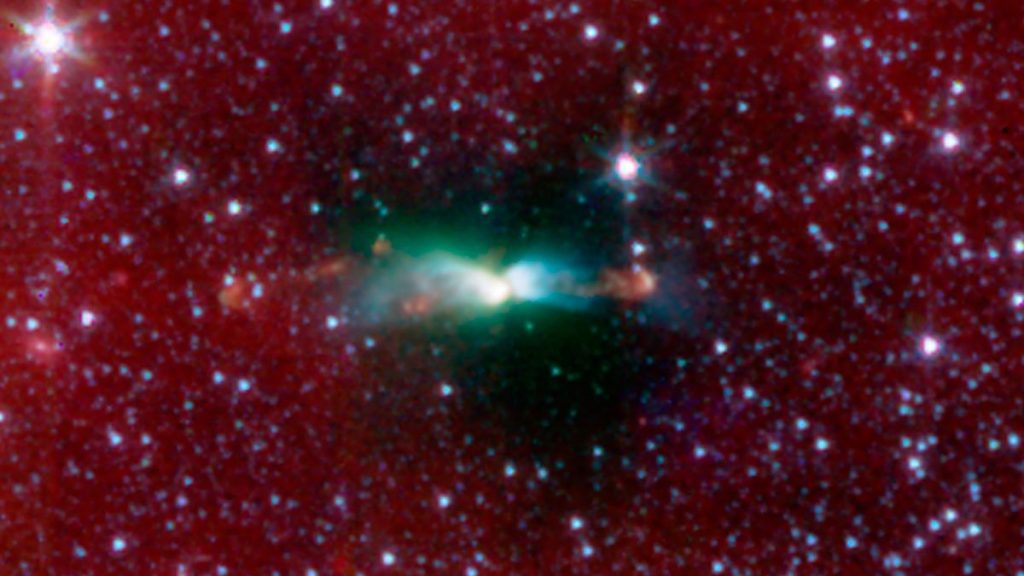While examining a stellar nursery, astronomers found something peculiar: a binary star system that may have formed when a wandering star fell into the gravity of its partner.
The stellar nursery L483, located about 650 light-years from Earth, is a cloud of gas and dust around 100 times the size of the solar system. At this very moment, it’s coalescing, densifying and heating up to form infant stars.
As a star forms, the gas of a stellar nursery collapses inward, and jets of gas and dust shoot out at high speed. If astronomers look closely, they expect to find a magnetic field that’s parallel to those jets.
Related: Hubble telescope captures spectacular laser-like jet from infant star (photo)
But when scientists peered at L483 with the Stratospheric Observatory for Infrared Astronomy (SOFIA) infrared telescope, they found something very different: L483’s magnetic field is twisted, curled away from the jets at a 45-degree angle.
So the team looked closer, piercing L483’s veil with the Atacama Large Millimeter/submillimeter Array (ALMA) radio telescope in Chile. They found a second star, hiding behind its larger counterpart at about the same distance as Pluto orbits the sun.
That finding alone didn’t explain the strange magnetic field. But something else would: a star that formed elsewhere and began moving toward its counterpart.
“We don’t know why one star would move toward another one,” said Erin Cox, an astrophysicist at Northwestern University who led the new study.
Because planets form from the same stellar nurseries, knowledge of how binary star systems form can give astronomers a better understanding of what planets in binary systems look like.
“In our census of exoplanets, we know planets exist around these double stars, but we don’t know much about how these planets differ from the ones that live around isolated stars,” Cox said.
The research was presented at the 240th meeting of the American Astronomical Society on June 14 and a study was published June 13 in The Astrophysical Journal.
Follow us on Twitter @Spacedotcom and on Facebook.

